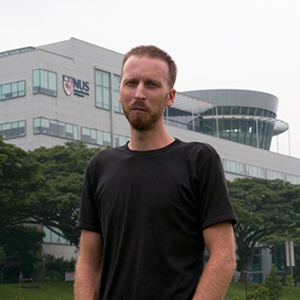Highlights
Quantum physicist Roy Glauber records memories of the Manhattan Project
Seventy years ago, on 6 August 1945, US forces unleashed an atomic bomb on the Japanese city of Hiroshima. Three days later, they dropped another on Nagasaki, bringing destruction to those cities but an end to World War II. One of the scientists involved in the US project to design these nuclear weapons was Roy Glauber. He recounts his personal memories of being part of the Manhattan Project in a new film by Karol Jalochowski, journalist and film-maker at Polish magazine Polityka and former CQT Outreach Fellow.
Roy Glauber is well known in CQT's research field for establishing the basis of quantum optics. In 2005, he shared a Nobel Prize for his work, long after the war, on the quantum theory of optical coherence. CQT's Director Artur Ekert introduced Karol to Roy's story. Karol then recorded parts of the interview with Roy Glauber in Singapore when Roy was visiting for a conference.
The documentary includes recently declassified footage and photographs from the archives of the Los Alamos National Laboratory, along with scenes that Karol filmed in Los Alamos and at the first test site. The full documentary is available to rent on Vimeo. This is the trailer:
The Bomb That Shook the World / Bomba, która wstrzasnela swiatem from POLITYKA on Vimeo.
"The Bomb that Shook the World" is the first in a series of scientific documentaries by Karol and Polityka on the theme of "Pioneers" in science. Future episodes will feature philosopher Daniel Dennett, mathematician Gregory Chaitin and physicist Julian Barbour.
Karol worked with CQT from 2012 to 2014, producing the documentary movie Reality Lost and numerous short interviews available on CQT's YouTube channel.
Learn more
Related Stories
 | Film-maker arrives at CQT for a year-long project September 13 2012 |






